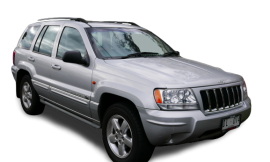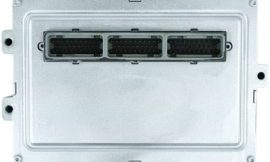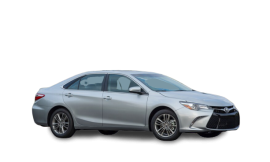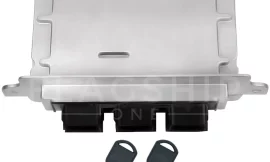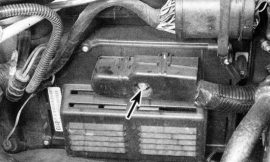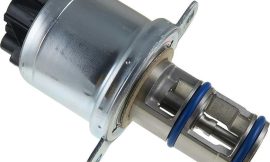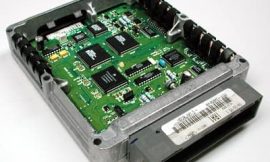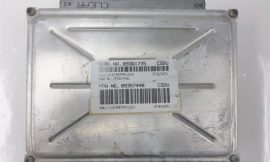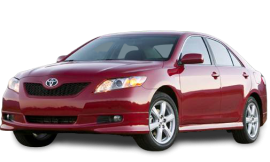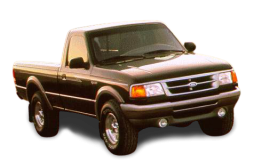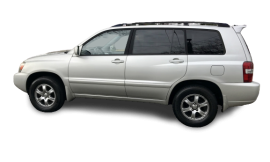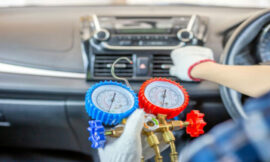In the realm of enhancing one’s driving experience, a high-quality car stereo system is paramount. The right sound system not only elevates the auditory experience but also enhances the overall ambiance of a drive, making any journey—be it a short commute or a long expedition—enjoyable. This article, in the following sections, will delve into various aspects of a good car stereo system. We’ll explore its impact on the driving experience, the elements that constitute a high-quality system, the different types of systems available in the market, and tips on choosing the right system for your car.
Compatibility Considerations
When choosing a car stereo system, compatibility with your vehicle is of utmost importance. Size and depth of the unit are two major factors to take into account. Your new stereo should fit perfectly into the space allocated in your dashboard, otherwise, it could look out of place or even cause functional issues. Car stereos are generally categorized as single-DIN or double-DIN, referring to their width and height. Therefore, it’s crucial to check your car’s specifications to ensure the new system aligns.
Another critical aspect to consider is how the new stereo system will interact with factory-installed equipment, such as external amplifiers. A mismatch can severely affect the sound quality and potentially damage the system. Therefore, you should verify that your new system’s output matches the input capabilities of your car’s built-in amplifier. If your vehicle doesn’t have an external amplifier, you may want to ensure the new stereo comes with a built-in amplifier of sufficient power to drive your speakers.
Budgeting and Costs
When considering an upgrade to your car stereo system, it’s important to consider all potential costs. The expense of a new system isn’t limited to the head unit alone; there are additional costs that need to be factored into your budget. For starters, the head units come in a vast price range, depending on the features they offer. A basic single-DIN stereo can start as low as $50, while a premium double-DIN unit with high-definition display, GPS, and other advanced features can climb well over $500.
In addition to the cost of the stereo, you might also need to account for additional expenses like installation, which can range anywhere from $50 to $100 if done professionally. Moreover, depending on the system’s compatibility with your car, you might need to purchase extra equipment such as wiring harnesses or dashboard kits which can add to the total cost.
Furthermore, if you’re planning on enhancing the sound quality further, you might consider adding high-quality speakers, an amplifier, or a subwoofer to your setup. These come at varying prices, depending on the brand and their specifications.
Lastly, remember to account for any potential maintenance or repair costs. While these are not immediate expenses, it’s prudent to have a budget for these eventualities. Remember, a balanced combination of costs, sound quality, and compatibility will ensure the best value for your investment.
Sound Quality and Head Unit Choices
One of the most significant factors determining your car stereo system’s sound quality is the choice of the head unit. The head unit is essentially the “brain” of your car audio system, and it directly influences the sound’s clarity, depth, and detail.
Entry-level head units, which are generally the most affordable option, offer basic functionality such as AM/FM radio, CD/DVD playback, and AUX input for connecting external audio devices. The sound quality provided by these units is decent but not remarkable, and they usually lack advanced features like high-resolution audio playback or extensive equalization options.
Mid-level head units sit comfortably between entry-level and high-end units in terms of price and feature set. They often include additional functionalities like Bluetooth connectivity for wireless audio streaming, USB ports for playing digital media files, and sometimes even support for satellite radio. In terms of sound quality, mid-level units offer a noticeable improvement over entry-level units, with better signal processing and more sophisticated equalization settings that let you tailor the sound to your preferences.
High-end head units, as you might expect, offer the best sound quality and the most extensive list of features. These units may support lossless audio formats for maximum sound fidelity, have high-powered built-in amplifiers for driving high-performance speakers, and offer advanced sound shaping capabilities like multi-band equalization and time alignment. Furthermore, many high-end units come with large, high-resolution touchscreens that not only enhance usability but also add a touch of style to your car’s interior.
Thus, while the choice of a head unit largely depends on your budget and feature preferences, remember that this component can significantly impact your car audio system’s sound quality.
Essential Features to Consider When Buying a Car Stereo System
FM/AM Radio: Even in the age of digital media, having FM/AM radio in your car stereo system is crucial. It not only provides a traditional and free source of music but also keeps you updated with news, sports, and local events. Moreover, in case of emergencies or disasters, local radio stations often serve as an important source of information.
CD Player: While digital media is more prevalent, many drivers still prefer having a CD player in their stereo system. It allows the use of a personal music collection and can offer higher sound quality than compressed digital audio files.
Bluetooth Connectivity: Bluetooth is essential for wireless streaming of music from your smartphone or other Bluetooth-enabled devices. It also enables hands-free calling, which is a crucial feature for ensuring safety while driving.
USB Ports and AUX Input: These allow you to connect external storage devices such as USB sticks or portable music players to play your digital music collection. The AUX input is useful for using older devices that might not have Bluetooth capabilities.
GPS Navigation: A stereo system with built-in GPS navigation can be very helpful, providing you with accurate and easy-to-follow directions. It can be a great feature, especially for those who frequently travel to new locations.
Touchscreen Display: A touchscreen can make the system easy to operate and navigate. Higher-end units often have large, high-resolution touchscreens that enhance visibility, user-experience, and the aesthetic appeal of the car’s interior.
Sound Quality Features: Look for stereo systems that offer high-resolution audio playback, adjustable equalization settings, or built-in amplifiers. These features help you customize the sound quality to match your preferences and the acoustic characteristics of your car.
Compatibility with Other Devices: The stereo system should be compatible with various devices, including your smartphone, tablet, iPod, or any other digital media players.
Tips for Selecting the Best Car Stereo System
When it comes to selecting the best car stereo system, a few practical tips can guide you towards the best option.
- Measure the Display Size: The display size of your car stereo system not only impacts the aesthetics of your car’s interior but also affects usability. A larger screen is easier to navigate, especially while driving. Therefore, before purchasing, always measure the space available in your dashboard and consider a stereo system that will fit perfectly.
- Integrating Steering Wheel Controls: If your existing system is controlled via the steering wheel, it’s essential to ensure that the new stereo system can be integrated with these controls as well. This feature will allow you to operate the system conveniently without shifting focus from the road, thereby enhancing safety.
- Reading User Reviews: User reviews offer a wealth of practical information about the product’s performance and reliability. Spend some time reading reviews of the car stereo systems you’re considering. Look out for comments on sound quality, user-friendliness, and compatibility issues. This will help you know what to expect from the product and avoid potential disappointments.
Frequently Asked Questions About Car Stereos
Q1: Can I upgrade my car stereo system without changing the speakers?
A: Yes, you can upgrade your car stereo system without changing the speakers. However, keep in mind that the improvement in sound quality will be limited by the performance of your existing speakers.
Q2: Is it necessary to have a built-in amplifier in the stereo system?
A: While it’s not strictly necessary, having a built-in amplifier can significantly enhance the sound quality of your car stereo, especially if you’re using high-performance speakers.
Q3: What is the benefit of a touchscreen display in a car stereo system?
A: A touchscreen display can make the stereo system easier to operate and navigate. It also enhances the aesthetic appeal of your car’s interior.
Q4: Why is Bluetooth connectivity important in a car stereo system?
A: Bluetooth connectivity enables wireless streaming of music from your smartphone or other Bluetooth-enabled devices. It also facilitates hands-free calling, which improves safety while driving.
Q5: How does FM/AM radio function in a digital age?
A: Despite the prevalence of digital media, FM/AM radio still serves as a traditional, free source of music, news, sports, and local events. In emergencies, local radio stations can be crucial sources of information.
Q6: What does ‘compatibility with other devices’ mean in the context of car stereos?
A: This refers to the stereo system’s ability to connect and work with various devices such as smartphones, tablets, iPods, or other digital media players.
Q7: How do I know if a car stereo system will fit in my car?
A: Before purchasing, measure the space available in your car’s dashboard. Stereo systems come in different sizes, so it’s essential to choose one that will fit your car’s dimensions.
In conclusion, when choosing a car stereo system, several features are worth considering. These include FM/AM radio, a CD player, Bluetooth connectivity, USB ports and AUX input, GPS navigation, touchscreen display, sound quality features, and compatibility with other devices. To make an informed choice, measure the display size of the stereo system, check its integration with steering wheel controls, and read user reviews. Despite advancements in digital media, traditional features like FM/AM radio still serve an essential function. A stereo system should ideally fit your car’s dimensions and be compatible with your existing speakers, even if you want to upgrade. Bluetooth connectivity and a touchscreen display enhance the user experience significantly, while a built-in amplifier can improve sound quality. Making the right choice can significantly enhance your driving experience by increasing safety, convenience, and enjoyment.




